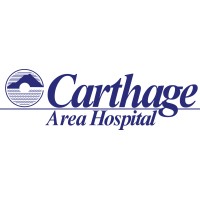
Carthage Area Hospital Company Cyber Security Posture
carthageareahospital.comCarthage Area Hospital was established as a not-for-profit 501 (c) (3) rural community hospital in 1965. Currently, a newly accredited, 25-bed Critical Access Hospital serves approximately 83,000 residents living in Jefferson, northern Lewis and southern St. Lawrence Counties. Originally, Carthage Area Hospital was a 78-bed facility until it applied for Critical Access Designation in the spring of 2014 and received the designation on July 2, 2014. The Hospital is proud to serve our North Country neighbors, our military personnel, and their families from Fort Drum. Fort Drum and the 10th Mountain Division (Light) are one of a few military installations within the United States that does not have its own on-post military hospital. Meeting our Hospital’s mission in healthcare support and well-being, we continually assess our efforts to improve as well as expand needed services and technologies for our community. This includes the healthcare support to our dedicated Soldiers from Fort Drum and the 10th Mountain Division (Light). As patriots, we value and appreciate our military and their families and do our most to assist them in becoming an integrated part of our community; while using the services of our facility. The Hospital serves the community in two capacities; it is a Vital Access provider and it is one of the largest employers within the area. Carthage Area Hospital employs nearly 340 full time employees (FTE) with an annual payroll of over $22 million dollars. The Hospital is accredited by the Joint Commission on Accreditation for Healthcare Organization (JCAHO). For more information, please visit our website: www.carthagehospital.com.
CAH Company Details
carthage-area-hospital
201-500 employees
1586
62
Hospitals and Health Care
carthageareahospital.com
Scan still pending
CAR_1472783
In-progress
Between 800 and 900
This score is AI-generated and less favored by cyber insurers, who prefer the TPRM score.
 CAH Global Score
CAH Global Score.png)

Carthage Area Hospital Company Scoring based on AI Models
| Model Name | Date | Description | Current Score Difference | Score |
|---|---|---|---|---|
| AVERAGE-Industry | 03-12-2025 | This score represents the average cybersecurity rating of companies already scanned within the same industry. It provides a benchmark to compare an individual company's security posture against its industry peers. | N/A | Between 800 and 900 |
Carthage Area Hospital Company Cyber Security News & History
| Entity | Type | Severity | Impact | Seen | Url ID | Details | View |
|---|---|---|---|---|---|---|---|
| Carthage Area Hospital | Cyber Attack | 60 | 2 | 09/2023 | CAR224923 | Link | |
Rankiteo Explanation : Attack limited on finance or reputationDescription: Carthage Area Hospital and Claxton Hepburn Medical Center in Ogdensburg discovered the incident on September 2023. Two north country hospitals have been targeted in a cyber attack, but officials say there appears to be no breach of patient information. The emergency departments at Carthage and Claxton have been placed on diversion, meaning other hospitals in the area have been informed and are ready to receive patients as needed. | |||||||
Carthage Area Hospital Company Subsidiaries

Carthage Area Hospital was established as a not-for-profit 501 (c) (3) rural community hospital in 1965. Currently, a newly accredited, 25-bed Critical Access Hospital serves approximately 83,000 residents living in Jefferson, northern Lewis and southern St. Lawrence Counties. Originally, Carthage Area Hospital was a 78-bed facility until it applied for Critical Access Designation in the spring of 2014 and received the designation on July 2, 2014. The Hospital is proud to serve our North Country neighbors, our military personnel, and their families from Fort Drum. Fort Drum and the 10th Mountain Division (Light) are one of a few military installations within the United States that does not have its own on-post military hospital. Meeting our Hospital’s mission in healthcare support and well-being, we continually assess our efforts to improve as well as expand needed services and technologies for our community. This includes the healthcare support to our dedicated Soldiers from Fort Drum and the 10th Mountain Division (Light). As patriots, we value and appreciate our military and their families and do our most to assist them in becoming an integrated part of our community; while using the services of our facility. The Hospital serves the community in two capacities; it is a Vital Access provider and it is one of the largest employers within the area. Carthage Area Hospital employs nearly 340 full time employees (FTE) with an annual payroll of over $22 million dollars. The Hospital is accredited by the Joint Commission on Accreditation for Healthcare Organization (JCAHO). For more information, please visit our website: www.carthagehospital.com.
Access Data Using Our API

Get company history
.png)
CAH Cyber Security News
Claxton-Hepburn Medical Center, Carthage Area Hospital Data Breach
Claxton-Hepburn Medical Center of Ogdensburg, New York and Carthage Area Hospital of Carthage, New York were impacted by a data breach.
Upstate New York nonprofit hospitals still facing issues after LockBit ransomware attack
Two major hospitals serving thousands in upstate New York are struggling to recover from cyberattacks that were announced last week.
Lockbit ransomware gang hit the Carthage Area Hospital and the Clayton-Hepburn Medical Center in New York
The Lockbit ransomware group claims to have hacked two major hospitals, the Carthage Area Hospital and Claxton-Hepburn Medical Center. The two hospitals serve ...
Hospitals ask courts to force cloud storage firm to return stolen data
Two not-for-profit hospitals in New York are seeking a court order to retrieve data stolen in an August ransomware attack and now stored on ...
The importance of cloud data security in healthcare
This article explores the advancements in healthcare's digital transformation, delving into the challenges of safeguarding patient data.
Bank of America Data Breach Highlights Third-Party Risks
A Bank of America vendor suffered a data breach in November last year wherein the threat actors compromised tens of thousands of customers.
Hospitals ask cloud storage company to hand over stolen data hosted on its servers
Two hospitals that suffered ransomware attacks have discovered their data is being stored by a cloud storage provider.
Cyber extortion victims grow by 77%, with small businesses impacted four times more often than medium and large businesses combined, reveals Orange Cyberdefense
The findings show a steep increase (77% YOY) in the number of observable cyber extortion (Cy-X) victims over the past 12 months.
Carthage Central School District target of $759K cybercrime
According to the release, the school district immediately reported the crime to the FBI and the state police, and is cooperating with the ...

CAH Similar Companies
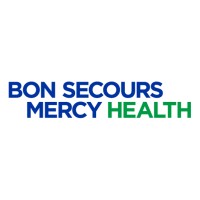
Bon Secours Mercy Health
On September 1, 2018 Bon Secours Health System and Mercy Health combined to become the United States’ fifth largest Catholic health care ministry and one of the nation’s 20 largest health care systems. With 48 hospitals, thousands of providers, over 1,000 points of care and over 60,000 employees Bon

Cencora
Cencora, a company building on the legacy of AmerisourceBergen, is a leading global pharmaceutical solutions organization centered on improving the lives of people and animals around the world. We connect manufacturers, providers, and patients to ensure that anyone can get the therapies they need, w
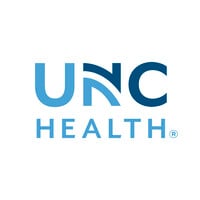
UNC Health
Our mission is to improve the health and well-being of North Carolinians and others whom we serve. We accomplish this by providing leadership and excellence in the interrelated areas of patient care, education and research. UNC Health and its 33,000 employees, continue to serve as North Carolina’s
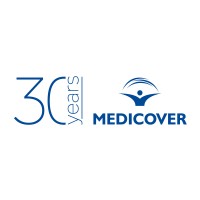
Medicover
Medicover is a leading international healthcare and diagnostic services provider, headquartered in Sweden and listed on Nasdaq Stockholm. Established in 1995 in response to the growing demand for high-quality healthcare services in Poland, Medicover subsequently expanded to other countries, fulfilli
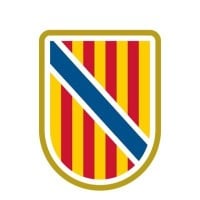
Servei de Salut de les Illes Balears
1. Misión El Servicio de Salud de las Islas Baleares tiene como misión proveer de servicios sanitarios públicos a sus usuarios a fin de satisfacer sus necesidades de salud, bajo los principios de equidad, eficiencia y calidad y por medio del desarrollo de actividades de promoción, prevención, cu
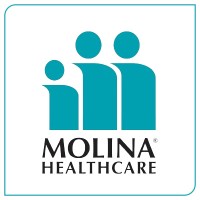
Molina Healthcare
Molina Healthcare is a FORTUNE 500 company that is focused exclusively on government-sponsored health care programs for families and individuals who qualify for government sponsored health care. Molina Healthcare contracts with state governments and serves as a health plan providing a wide range o

Frequently Asked Questions (FAQ) on Cybersecurity Incidents
CAH CyberSecurity History Information
Total Incidents: According to Rankiteo, CAH has faced 1 incidents in the past.
Incident Types: The types of cybersecurity incidents that have occurred include ['Cyber Attack'].
Total Financial Loss: The total financial loss from these incidents is estimated to be {total_financial_loss}.
Cybersecurity Posture: The company's overall cybersecurity posture is described as Carthage Area Hospital was established as a not-for-profit 501 (c) (3) rural community hospital in 1965. Currently, a newly accredited, 25-bed Critical Access Hospital serves approximately 83,000 residents living in Jefferson, northern Lewis and southern St. Lawrence Counties. Originally, Carthage Area Hospital was a 78-bed facility until it applied for Critical Access Designation in the spring of 2014 and received the designation on July 2, 2014. The Hospital is proud to serve our North Country neighbors, our military personnel, and their families from Fort Drum. Fort Drum and the 10th Mountain Division (Light) are one of a few military installations within the United States that does not have its own on-post military hospital. Meeting our Hospital’s mission in healthcare support and well-being, we continually assess our efforts to improve as well as expand needed services and technologies for our community. This includes the healthcare support to our dedicated Soldiers from Fort Drum and the 10th Mountain Division (Light). As patriots, we value and appreciate our military and their families and do our most to assist them in becoming an integrated part of our community; while using the services of our facility. The Hospital serves the community in two capacities; it is a Vital Access provider and it is one of the largest employers within the area. Carthage Area Hospital employs nearly 340 full time employees (FTE) with an annual payroll of over $22 million dollars. The Hospital is accredited by the Joint Commission on Accreditation for Healthcare Organization (JCAHO). For more information, please visit our website: www.carthagehospital.com..
Detection and Response: The company detects and responds to cybersecurity incidents through {description_of_detection_and_response_process}.
Incident Details
Incident 1: Ransomware Attack
Title: {Incident_Title}
Description: {Brief_description_of_the_incident}
Date Detected: {Detection_Date}
Date Publicly Disclosed: {Disclosure_Date}
Date Resolved: {Resolution_Date}
Type: {Type_of_Attack}
Attack Vector: {Attack_Vector}
Vulnerability Exploited: {Vulnerability}
Threat Actor: {Threat_Actor}
Motivation: {Motivation}
Incident 2: Data Breach
Title: {Incident_Title}
Description: {Brief_description_of_the_incident}
Date Detected: {Detection_Date}
Date Publicly Disclosed: {Disclosure_Date}
Date Resolved: {Resolution_Date}
Type: {Type_of_Attack}
Attack Vector: {Attack_Vector}
Vulnerability Exploited: {Vulnerability}
Threat Actor: {Threat_Actor}
Motivation: {Motivation}
Common Attack Types: As of now, the company has not encountered any reported incidents involving common cyberattacks.
Identification of Attack Vectors: The company identifies the attack vectors used in incidents through {description_of_identification_process}.
Impact of the Incidents
Incident 1: Ransomware Attack
Financial Loss: {Financial_Loss}
Data Compromised: {Data_Compromised}
Systems Affected: {Systems_Affected}
Downtime: {Downtime}
Operational Impact: {Operational_Impact}
Conversion Rate Impact: {Conversion_Rate_Impact}
Revenue Loss: {Revenue_Loss}
Customer Complaints: {Customer_Complaints}
Brand Reputation Impact: {Brand_Reputation_Impact}
Legal Liabilities: {Legal_Liabilities}
Identity Theft Risk: {Identity_Theft_Risk}
Payment Information Risk: {Payment_Information_Risk}
Incident 2: Data Breach
Financial Loss: {Financial_Loss}
Data Compromised: {Data_Compromised}
Systems Affected: {Systems_Affected}
Downtime: {Downtime}
Operational Impact: {Operational_Impact}
Conversion Rate Impact: {Conversion_Rate_Impact}
Revenue Loss: {Revenue_Loss}
Customer Complaints: {Customer_Complaints}
Brand Reputation Impact: {Brand_Reputation_Impact}
Legal Liabilities: {Legal_Liabilities}
Identity Theft Risk: {Identity_Theft_Risk}
Payment Information Risk: {Payment_Information_Risk}
Average Financial Loss: The average financial loss per incident is {average_financial_loss}.
Commonly Compromised Data Types: The types of data most commonly compromised in incidents are {list_of_commonly_compromised_data_types}.
Incident 1: Ransomware Attack
Entity Name: {Entity_Name}
Entity Type: {Entity_Type}
Industry: {Industry}
Location: {Location}
Size: {Size}
Customers Affected: {Customers_Affected}
Incident 2: Data Breach
Entity Name: {Entity_Name}
Entity Type: {Entity_Type}
Industry: {Industry}
Location: {Location}
Size: {Size}
Customers Affected: {Customers_Affected}
Response to the Incidents
Incident 1: Ransomware Attack
Incident Response Plan Activated: {Yes/No}
Third Party Assistance: {Yes/No}
Law Enforcement Notified: {Yes/No}
Containment Measures: {Containment_Measures}
Remediation Measures: {Remediation_Measures}
Recovery Measures: {Recovery_Measures}
Communication Strategy: {Communication_Strategy}
Adaptive Behavioral WAF: {Adaptive_Behavioral_WAF}
On-Demand Scrubbing Services: {On_Demand_Scrubbing_Services}
Network Segmentation: {Network_Segmentation}
Enhanced Monitoring: {Enhanced_Monitoring}
Incident 2: Data Breach
Incident Response Plan Activated: {Yes/No}
Third Party Assistance: {Yes/No}
Law Enforcement Notified: {Yes/No}
Containment Measures: {Containment_Measures}
Remediation Measures: {Remediation_Measures}
Recovery Measures: {Recovery_Measures}
Communication Strategy: {Communication_Strategy}
Adaptive Behavioral WAF: {Adaptive_Behavioral_WAF}
On-Demand Scrubbing Services: {On_Demand_Scrubbing_Services}
Network Segmentation: {Network_Segmentation}
Enhanced Monitoring: {Enhanced_Monitoring}
Incident Response Plan: The company's incident response plan is described as {description_of_incident_response_plan}.
Third-Party Assistance: The company involves third-party assistance in incident response through {description_of_third_party_involvement}.
Data Breach Information
Incident 2: Data Breach
Type of Data Compromised: {Type_of_Data}
Number of Records Exposed: {Number_of_Records}
Sensitivity of Data: {Sensitivity_of_Data}
Data Exfiltration: {Yes/No}
Data Encryption: {Yes/No}
File Types Exposed: {File_Types}
Personally Identifiable Information: {Yes/No}
Prevention of Data Exfiltration: The company takes the following measures to prevent data exfiltration: {description_of_prevention_measures}.
Handling of PII Incidents: The company handles incidents involving personally identifiable information (PII) through {description_of_handling_process}.
Ransomware Information
Incident 1: Ransomware Attack
Ransom Demanded: {Ransom_Amount}
Ransom Paid: {Ransom_Paid}
Ransomware Strain: {Ransomware_Strain}
Data Encryption: {Yes/No}
Data Exfiltration: {Yes/No}
Ransom Payment Policy: The company's policy on paying ransoms in ransomware incidents is described as {description_of_ransom_payment_policy}.
Data Recovery from Ransomware: The company recovers data encrypted by ransomware through {description_of_data_recovery_process}.
Regulatory Compliance
Incident 1: Ransomware Attack
Regulations Violated: {Regulations_Violated}
Fines Imposed: {Fines_Imposed}
Legal Actions: {Legal_Actions}
Regulatory Notifications: {Regulatory_Notifications}
Incident 2: Data Breach
Regulations Violated: {Regulations_Violated}
Fines Imposed: {Fines_Imposed}
Legal Actions: {Legal_Actions}
Regulatory Notifications: {Regulatory_Notifications}
Regulatory Frameworks: The company complies with the following regulatory frameworks regarding cybersecurity: {list_of_regulatory_frameworks}.
Ensuring Regulatory Compliance: The company ensures compliance with regulatory requirements through {description_of_compliance_measures}.
Lessons Learned and Recommendations
Incident 1: Ransomware Attack
Lessons Learned: {Lessons_Learned}
Incident 2: Data Breach
Lessons Learned: {Lessons_Learned}
Incident 1: Ransomware Attack
Recommendations: {Recommendations}
Incident 2: Data Breach
Recommendations: {Recommendations}
Key Lessons Learned: The key lessons learned from past incidents are {list_of_key_lessons_learned}.
Implemented Recommendations: The company has implemented the following recommendations to improve cybersecurity: {list_of_implemented_recommendations}.
References
Additional Resources: Stakeholders can find additional resources on cybersecurity best practices at {list_of_additional_resources}.
Investigation Status
Incident 1: Ransomware Attack
Investigation Status: {Investigation_Status}
Incident 2: Data Breach
Investigation Status: {Investigation_Status}
Communication of Investigation Status: The company communicates the status of incident investigations to stakeholders through {description_of_communication_process}.
Stakeholder and Customer Advisories
Incident 1: Ransomware Attack
Stakeholder Advisories: {Stakeholder_Advisories}
Customer Advisories: {Customer_Advisories}
Incident 2: Data Breach
Stakeholder Advisories: {Stakeholder_Advisories}
Customer Advisories: {Customer_Advisories}
Advisories Provided: The company provides the following advisories to stakeholders and customers following an incident: {description_of_advisories_provided}.
Initial Access Broker
Incident 1: Ransomware Attack
Entry Point: {Entry_Point}
Reconnaissance Period: {Reconnaissance_Period}
Backdoors Established: {Backdoors_Established}
High Value Targets: {High_Value_Targets}
Data Sold on Dark Web: {Yes/No}
Incident 2: Data Breach
Entry Point: {Entry_Point}
Reconnaissance Period: {Reconnaissance_Period}
Backdoors Established: {Backdoors_Established}
High Value Targets: {High_Value_Targets}
Data Sold on Dark Web: {Yes/No}
Monitoring and Mitigation of Initial Access Brokers: The company monitors and mitigates the activities of initial access brokers through {description_of_monitoring_and_mitigation_measures}.
Post-Incident Analysis
Incident 1: Ransomware Attack
Root Causes: {Root_Causes}
Corrective Actions: {Corrective_Actions}
Incident 2: Data Breach
Root Causes: {Root_Causes}
Corrective Actions: {Corrective_Actions}
Post-Incident Analysis Process: The company's process for conducting post-incident analysis is described as {description_of_post_incident_analysis_process}.
Corrective Actions Taken: The company has taken the following corrective actions based on post-incident analysis: {list_of_corrective_actions_taken}.
Additional Questions
General Information
Ransom Payment History: The company has {paid/not_paid} ransoms in the past.
Last Ransom Demanded: The amount of the last ransom demanded was {last_ransom_amount}.
Last Attacking Group: The attacking group in the last incident was {last_attacking_group}.
Incident Details
Most Recent Incident Detected: The most recent incident detected was on {most_recent_incident_detected_date}.
Most Recent Incident Publicly Disclosed: The most recent incident publicly disclosed was on {most_recent_incident_publicly_disclosed_date}.
Most Recent Incident Resolved: The most recent incident resolved was on {most_recent_incident_resolved_date}.
Impact of the Incidents
Highest Financial Loss: The highest financial loss from an incident was {highest_financial_loss}.
Most Significant Data Compromised: The most significant data compromised in an incident was {most_significant_data_compromised}.
Most Significant System Affected: The most significant system affected in an incident was {most_significant_system_affected}.
Response to the Incidents
Third-Party Assistance in Most Recent Incident: The third-party assistance involved in the most recent incident was {third_party_assistance_in_most_recent_incident}.
Containment Measures in Most Recent Incident: The containment measures taken in the most recent incident were {containment_measures_in_most_recent_incident}.
Data Breach Information
Most Sensitive Data Compromised: The most sensitive data compromised in a breach was {most_sensitive_data_compromised}.
Number of Records Exposed: The number of records exposed in the most significant breach was {number_of_records_exposed}.
Ransomware Information
Highest Ransom Demanded: The highest ransom demanded in a ransomware incident was {highest_ransom_demanded}.
Highest Ransom Paid: The highest ransom paid in a ransomware incident was {highest_ransom_paid}.
Regulatory Compliance
Highest Fine Imposed: The highest fine imposed for a regulatory violation was {highest_fine_imposed}.
Most Significant Legal Action: The most significant legal action taken for a regulatory violation was {most_significant_legal_action}.
Lessons Learned and Recommendations
Most Significant Lesson Learned: The most significant lesson learned from past incidents was {most_significant_lesson_learned}.
Most Significant Recommendation Implemented: The most significant recommendation implemented to improve cybersecurity was {most_significant_recommendation_implemented}.
References
Most Recent Source: The most recent source of information about an incident is {most_recent_source}.
Most Recent URL for Additional Resources: The most recent URL for additional resources on cybersecurity best practices is {most_recent_url}.
Investigation Status
Current Status of Most Recent Investigation: The current status of the most recent investigation is {current_status_of_most_recent_investigation}.
Stakeholder and Customer Advisories
Most Recent Stakeholder Advisory: The most recent stakeholder advisory issued was {most_recent_stakeholder_advisory}.
Most Recent Customer Advisory: The most recent customer advisory issued was {most_recent_customer_advisory}.
Initial Access Broker
Most Recent Entry Point: The most recent entry point used by an initial access broker was {most_recent_entry_point}.
Most Recent Reconnaissance Period: The most recent reconnaissance period for an incident was {most_recent_reconnaissance_period}.
Post-Incident Analysis
Most Significant Root Cause: The most significant root cause identified in post-incident analysis was {most_significant_root_cause}.
Most Significant Corrective Action: The most significant corrective action taken based on post-incident analysis was {most_significant_corrective_action}.
What Do We Measure?
















Every week, Rankiteo analyzes billions of signals to give organizations a sharper, faster view of emerging risks. With deeper, more actionable intelligence at their fingertips, security teams can outpace threat actors, respond instantly to Zero-Day attacks, and dramatically shrink their risk exposure window.
These are some of the factors we use to calculate the overall score:
Identify exposed access points, detect misconfigured SSL certificates, and uncover vulnerabilities across the network infrastructure.
Gain visibility into the software components used within an organization to detect vulnerabilities, manage risk, and ensure supply chain security.
Monitor and manage all IT assets and their configurations to ensure accurate, real-time visibility across the company's technology environment.
Leverage real-time insights on active threats, malware campaigns, and emerging vulnerabilities to proactively defend against evolving cyberattacks.




